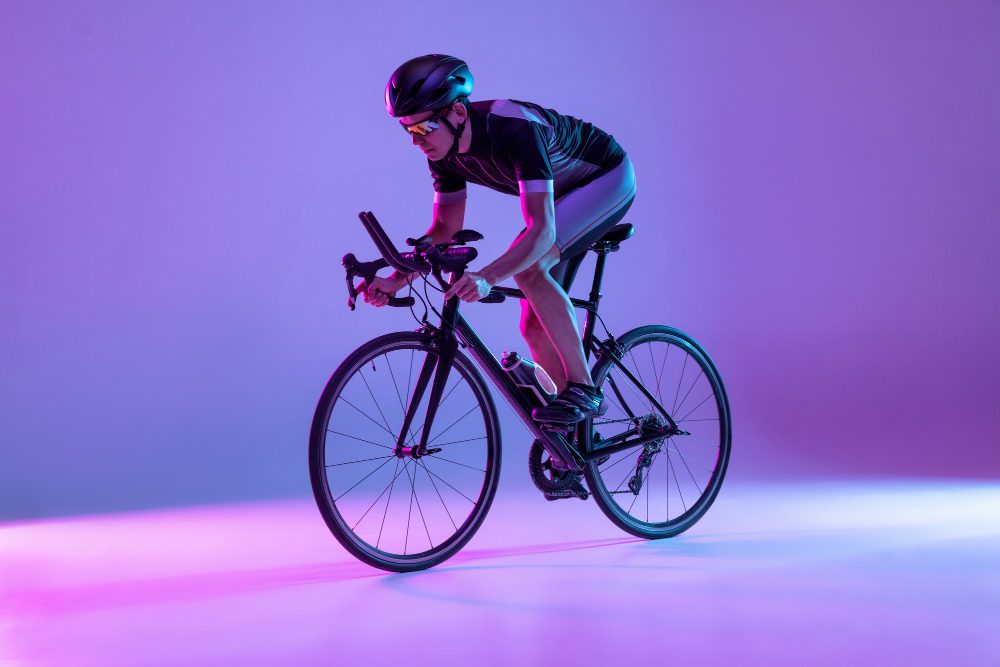How much faster is a road bike vs endurance bike?
When it comes to choosing a bike, particularly for long-distance rides or competitive cycling, the decision often comes down to whether to opt for a road bike or an endurance bike. While both types offer their own advantages, one of the key factors that many cyclists consider is the speed. In this article, we will explore the differences between road bikes and endurance bikes in terms of speed and help you determine which one might be the best fit for your riding goals.
Speed Comparison: Road Bike vs Endurance Bike
When it comes to sheer speed, road bikes have traditionally been favored by cyclists. These bikes are built with aerodynamics in mind and are designed to slice through the air with minimal resistance. The geometry of a road bike typically places the rider in a more aggressive, aerodynamic position, allowing them to generate more power and maintain higher speeds.
On the other hand, endurance bikes are designed with comfort and long-distance riding in mind. They typically have a more relaxed geometry, with a taller head tube and shorter top tube, resulting in a more upright riding position. While this may sacrifice some aerodynamic advantage, endurance bikes offer greater comfort, especially during long rides or on rough roads. This comfort can potentially improve endurance and overall performance.
So, how much faster is a road bike compared to an endurance bike? The answer depends on various factors, including the terrain, rider’s fitness level, and riding conditions. On flat and smooth roads, road bikes are generally faster due to their aerodynamic advantages. However, when it comes to tackling hilly or uneven terrain, endurance bikes may offer some advantages.
Factors Affecting Speed
1. Aerodynamics
The aerodynamic design of road bikes plays a significant role in their speed. These bikes often feature sleek frames, narrow tires, and drop handlebars that allow the rider to assume a more streamlined position. This reduces wind resistance and enables riders to maintain higher speeds with less effort.
2. Weight
The weight of a bike can also impact its speed. Road bikes are generally lighter compared to endurance bikes, which makes them easier to accelerate and climb hills. Lighter frames and components contribute to improved power transfer and efficiency.
3. Tires
Tire choice can make a noticeable difference in speed. Road bikes typically have thinner, smoother tires with higher tire pressures, which reduce rolling resistance. This allows for faster acceleration and maintains momentum more efficiently.
“Road bikes are built with aerodynamics in mind and are designed to slice through the air with minimal resistance.”
It’s important to note that individual rider fitness and experience also play a significant role in determining speed. A well-trained cyclist on an endurance bike might easily outpace a less fit rider on a road bike. Ultimately, the performance of a bike depends on the combination of factors, including the rider’s strength, technique, and familiarity with the bike.
Choosing the Right Bike for You
When choosing between a road bike and an endurance bike, it’s essential to consider your specific riding goals. If you prioritize speed and plan to primarily ride on open roads or participate in races, a road bike may be the better option. However, if you value comfort and plan to embark on long rides or tackle rough terrains, an endurance bike might be a more suitable choice.
To make an informed decision, it’s recommended to test ride both types of bikes and consider factors such as your riding style, fitness level, and the terrain you will predominantly encounter.
Are endurance bikes slower than race bikes?
When it comes to choosing a road bike, one of the most common questions that arises is whether endurance bikes are slower than race bikes. The short answer is that it depends on the specific circumstances and preferences of the rider.
Endurance Bikes:
Endurance bikes are designed with comfort in mind. They typically have a more relaxed geometry, which puts the rider in a more upright position. This can reduce fatigue on long rides and make the bike more stable and predictable. Endurance bikes also tend to have wider tires, which provide additional cushioning and traction.
Race Bikes:
Race bikes, on the other hand, are built for speed and performance. They often have a more aggressive and aerodynamic posture, which allows riders to generate more power and cut through the wind more efficiently. Race bikes usually have thinner tires, which reduce rolling resistance and increase speed.
Factors to Consider:
There are several factors to consider when comparing the speed of endurance bikes and race bikes:
- Terrain: On flat terrain or descents, race bikes generally have an advantage due to their aerodynamic design and lighter weight. However, on hilly or rough roads, endurance bikes may perform better due to their stability and comfort.
- Rider Fitness: A fit and experienced rider may be able to generate enough power on an endurance bike to match or even surpass the speed of a less fit rider on a race bike.
- Distance: For long-distance rides, endurance bikes can offer significant advantages in terms of comfort and reduced fatigue, allowing riders to maintain a more consistent pace over time.
- Personal Preference: Ultimately, the choice between an endurance bike and a race bike depends on personal preferences. Some riders prioritize speed and performance, while others prioritize comfort and enjoyment of the ride.
“The right bike for you depends on your individual needs and goals.”
It is important to note that advancements in technology and design have blurred the lines between endurance and race bikes. Nowadays, many manufacturers offer “all-rounders” that combine elements of both types of bikes, aiming to provide a balance between speed and comfort.
In conclusion, the speed of endurance bikes versus race bikes is not a clear-cut answer. It depends on various factors such as the terrain, rider fitness, distance, and personal preference. Both types of bikes have their advantages and disadvantages, and the right choice ultimately depends on the individual rider’s needs and goals.
Are touring bikes slower than road bikes?
When it comes to comparing touring bikes and road bikes, speed is often a topic of debate. While road bikes are known for their speed and efficiency, touring bikes are designed for long-distance travel and carrying heavy loads. So, are touring bikes slower than road bikes? Let’s take a closer look.
Touring Bikes
Touring bikes are built with durability and comfort in mind. They typically have a more relaxed geometry, wider tires, and are equipped with racks and fenders for carrying gear. These features make them ideal for long-distance adventures and handling various road conditions. However, they may not be as fast as road bikes due to their weight and wider tires, which can create more rolling resistance.
Road Bikes
Road bikes, on the other hand, are designed for speed and efficiency. They have a lightweight frame, aerodynamic features, and narrower tires, allowing riders to go faster with less effort. The aggressive riding position on a road bike also contributes to better aerodynamics and increased power transfer.
Comparing Speed
While touring bikes may be slower than road bikes in terms of raw speed, it’s important to consider the purpose for which they are designed. Touring bikes excel in long-distance travel and carrying heavy loads, whereas road bikes are optimized for speed and performance. If you’re looking to cover long distances with lots of gear, a touring bike is the better choice. But if you want to ride fast and compete in races, a road bike is the way to go.
The Importance of Fit and Riding Style
It’s worth noting that individual factors such as fitness level, riding style, and the terrain being covered can also impact the speed of a bike. Even though road bikes are generally faster, a well-fitted touring bike ridden by a skilled cyclist can still maintain a respectable pace on the road.
Ultimately, the choice between a touring bike and a road bike depends on your specific needs and preferences. Both have their own advantages and excel in different areas.
In conclusion, while touring bikes may be slower than road bikes in terms of raw speed, they offer superior comfort, durability, and the ability to carry heavy loads. Road bikes, on the other hand, are designed for speed and efficiency. Whether you prioritize speed or functionality will determine the best bike for your needs.
How much faster is a TT bike than a road bike with aero bars?
A time trial (TT) bike is designed specifically for racing against the clock, with aerodynamics being the primary focus. Aero bars, on the other hand, can be added to a regular road bike to provide a more aerodynamic riding position. But how much of a difference does it really make in terms of speed?
What are aero bars?
Aero bars, also known as triathlon bars or time trial bars, are extensions that can be fitted onto the handlebars of a road bike. They allow the rider to adopt a more streamlined position by resting their forearms on padded pads and reaching forward, reducing air resistance and improving aerodynamics.
Comparing TT bikes and road bikes with aero bars
While there is no definitive answer to how much faster a TT bike is compared to a road bike with aero bars, studies have shown that a well-optimized TT bike can save between 1 and 2 minutes over a 40-kilometer time trial compared to a road bike with aero bars.
This significant time difference is primarily due to the advanced aerodynamic features found on TT bikes, such as aero-shaped frame tubing, integrated handlebars, and deep-section wheels. These features minimize drag and allow the rider to maintain a more efficient and aerodynamic position.
The impact of aero bars on a road bike
Adding aero bars to a road bike can provide a notable improvement in terms of aerodynamics and speed. By lowering your riding position and reducing wind resistance, you can gain a few seconds per kilometer, resulting in a faster overall time.
However, it’s important to note that the level of improvement with aero bars on a road bike is not as significant as with a dedicated TT bike. The overall design and specific features of a TT bike optimize it for racing against the clock, providing a greater advantage in terms of speed.
Factors to consider
The difference in speed between a TT bike and a road bike with aero bars can vary depending on several factors:
- The rider’s position and ability to maintain an aerodynamic posture
- The course terrain and wind conditions
- The level of bike and equipment optimization
Conclusion
In conclusion, road bikes are generally faster than endurance bikes due to their aerodynamic design and lightweight construction. However, the actual speed difference can vary depending on various factors. It is crucial to assess your own riding goals, preferences, and the type of terrain you’ll be riding on before making a decision. Remember, both road bikes and endurance bikes have their own strengths, and the most important thing is to choose a bike that suits your individual needs and enhances your overall enjoyment of cycling.
“While a road bike with aero bars can provide a noticeable improvement in aerodynamics and speed, a dedicated TT bike is still the superior choice for time trials due to its specialized design and advanced aerodynamic features.”
If you’re serious about time trials and want to maximize your performance, investing in a TT bike is recommended. However, if you already own a road bike, adding aero bars can be a cost-effective way to enhance aerodynamics and achieve faster times.
Ultimately, the choice between a TT bike and a road bike with aero bars depends on your goals, budget, and personal preferences. Both options offer advantages in terms of speed, and it’s important to evaluate your individual needs before making a decision.



